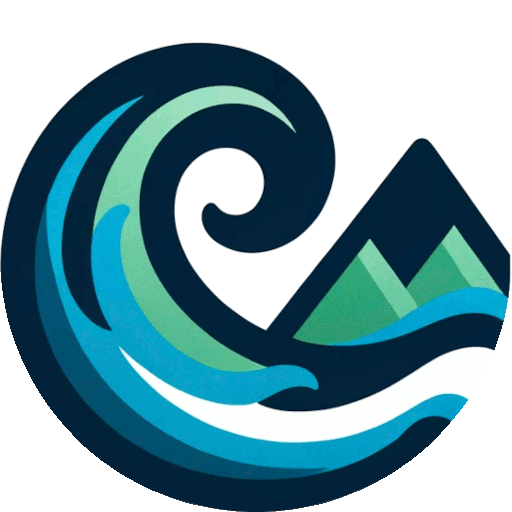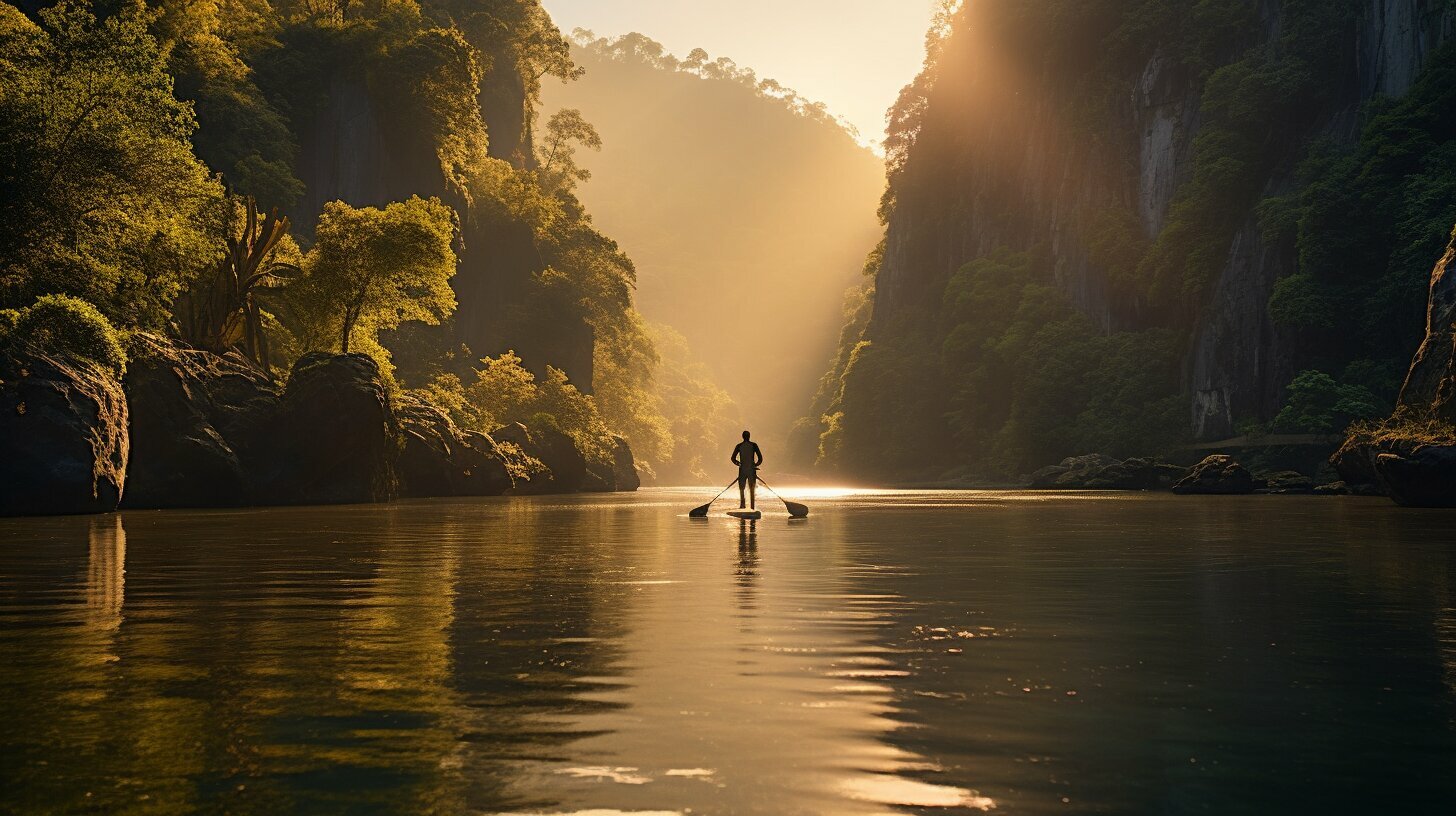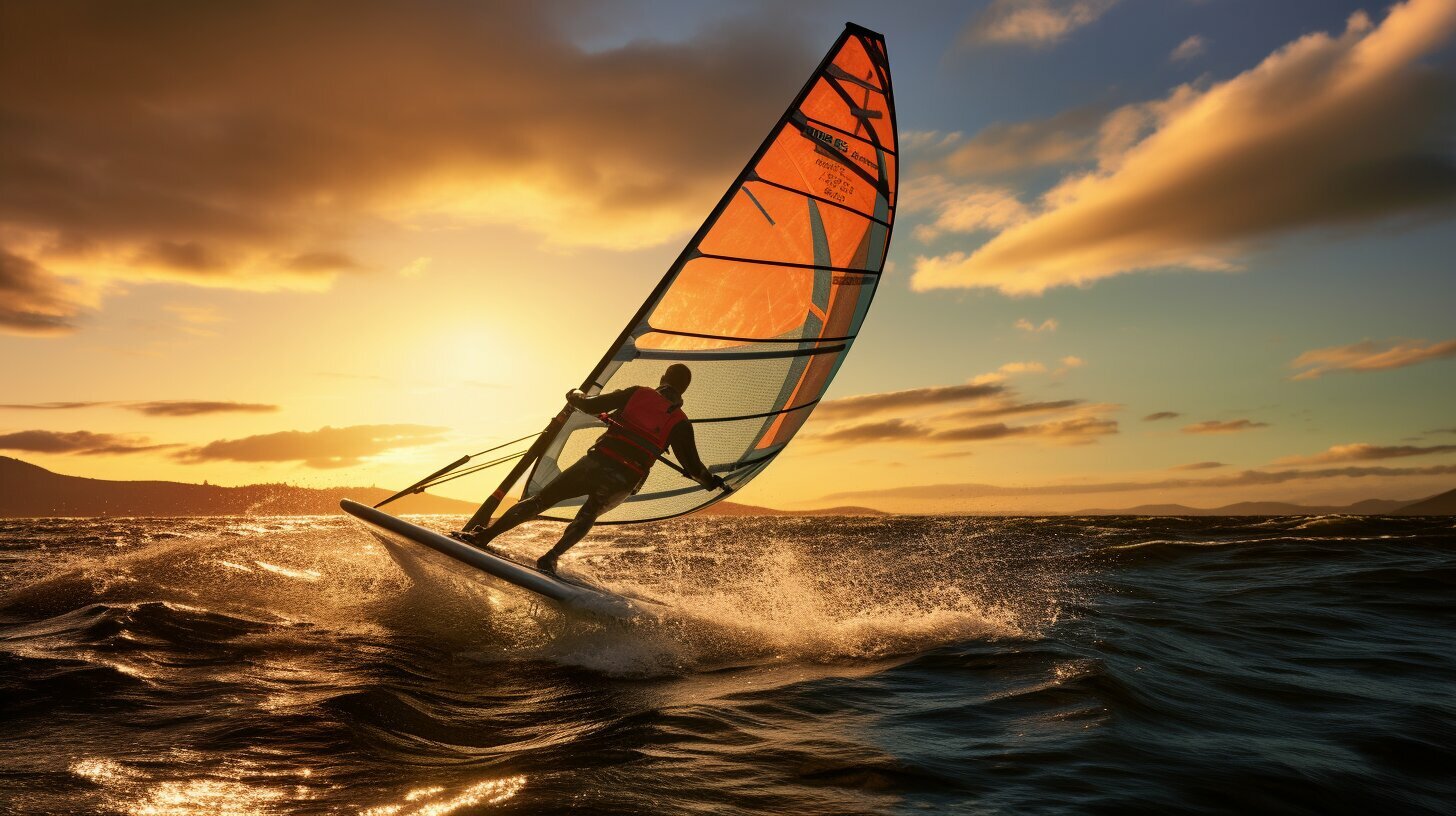Are you looking for a new adventure that combines the tranquility of the great outdoors with an exciting physical challenge? Look no further than river paddleboarding! This thrilling activity allows you to explore unique waterways, challenge your balance skills, and connect with nature all at once.
Whether you’re an experienced paddleboarder or a beginner looking to try something new, river paddleboarding offers a unique and rewarding experience. Glide along serene and picturesque rivers, observe stunning natural scenery, and immerse yourself in the great outdoors while getting a full-body workout.
Key Takeaways
- River paddleboarding combines the excitement of exploring new waterways with the tranquility of the great outdoors.
- This activity offers a unique and rewarding experience for both experienced and beginner paddleboarders.
- Enjoy the beauty of serene rivers, stunning natural scenery and get an enjoyable full-body workout.
The Beauty of River Paddleboarding
There’s something magical about gliding along the pristine waters of a river on a paddleboard. With its serene and picturesque surroundings, paddleboarding on rivers is truly an unforgettable experience.
Whether you’re a seasoned pro or a first-time paddler, the tranquility of floating along the water, observing nature, and taking in breathtaking scenery is unparalleled. With each stroke of the paddle, you’ll feel a sense of peace and connection with the natural world around you.
Disclosure: When you buy through links on our site, we may earn an affiliate commission.
What’s more, paddleboarding on rivers offers a unique opportunity to explore waterways that are often inaccessible by other means. With your paddleboard as your vessel, you’ll have the freedom to navigate tranquil backwaters, hidden coves, and sweeping bends as you follow the water’s meandering path.
The beauty of river paddleboarding lies in its simplicity. You don’t need a lot of expensive gear or training to get started. All you need is a board, a paddle, and a sense of adventure. So why not take the plunge and discover the joys of paddleboarding on rivers for yourself?
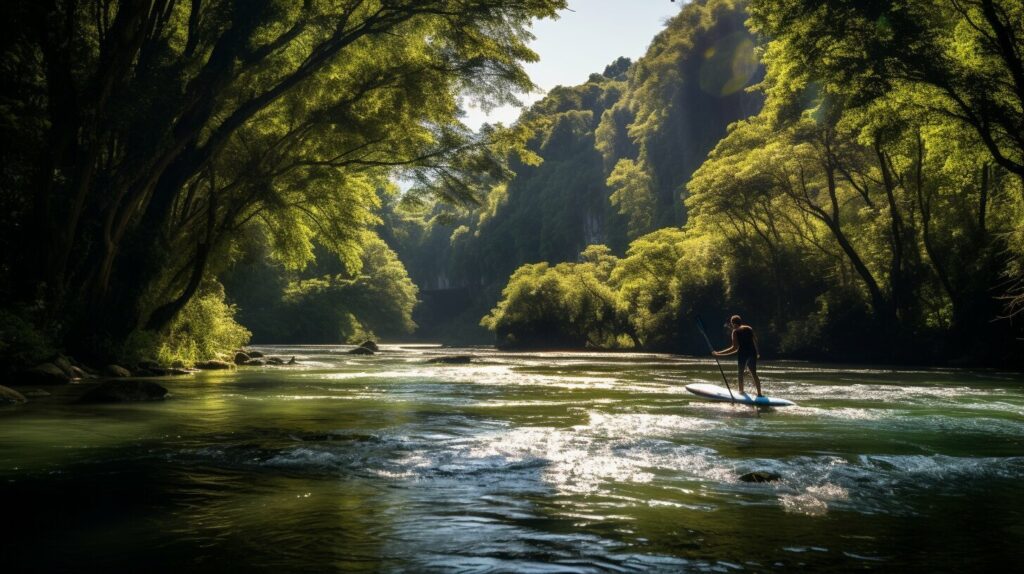
The Most Serene and Picturesque Surroundings Awaiting for You
Whether you’re looking for a peaceful escape or an adrenaline-fueled adventure, the rivers of America offer some of the best paddleboarding experiences in the world.
The Colorado River, winding through the breathtaking Grand Canyon, is a popular destination for river paddleboarders seeking a true challenge. With its rapids and steep drops, this river demands exceptional balance and skill from paddlers of all levels.
The Snake River in Wyoming, on the other hand, offers a more relaxed paddleboarding experience, with its smooth waters and stunning mountain vistas. And for those seeking a gentle paddle through beautiful scenery, the Chattahoochee River in Georgia is hard to beat.
No matter where you choose to paddleboard, the beauty of river exploration is sure to leave you feeling invigorated, refreshed, and inspired.
Top River Paddleboarding Spots in America
Experience the thrill of river paddleboarding in some of the best locations in the United States. From scenic and tranquil rivers to challenging whitewater rapids, the country offers a wide range of options for every skill level and preference.
Here are some of the best river paddleboarding spots in America:
| Location | Best time to go | Difficulty level |
|---|---|---|
| Colorado River, Arizona | April-October | Intermediate |
| Snake River, Wyoming | June-September | Advanced |
| Chattahoochee River, Georgia | Year-round | Beginner |
| Deschutes River, Oregon | May-September | Intermediate |
| Arkansas River, Colorado | May-July | Advanced |
The Colorado River in Arizona is a popular spot for intermediate paddleboarders, offering stunning views of the Grand Canyon and challenging rapids. The Snake River in Wyoming is a favorite among advanced paddleboarders, providing both exciting rapids and peaceful stretches through the Teton Mountains.
If you’re a beginner, the Chattahoochee River in Georgia is an excellent choice, with slow-moving waters and beautiful scenery. The Deschutes River in Oregon is also a great option for intermediate paddleboarders, featuring gorgeous canyons and scenic views.
For those seeking a more challenging adventure, the Arkansas River in Colorado is a great choice, with thrilling rapids and stunning natural scenery.
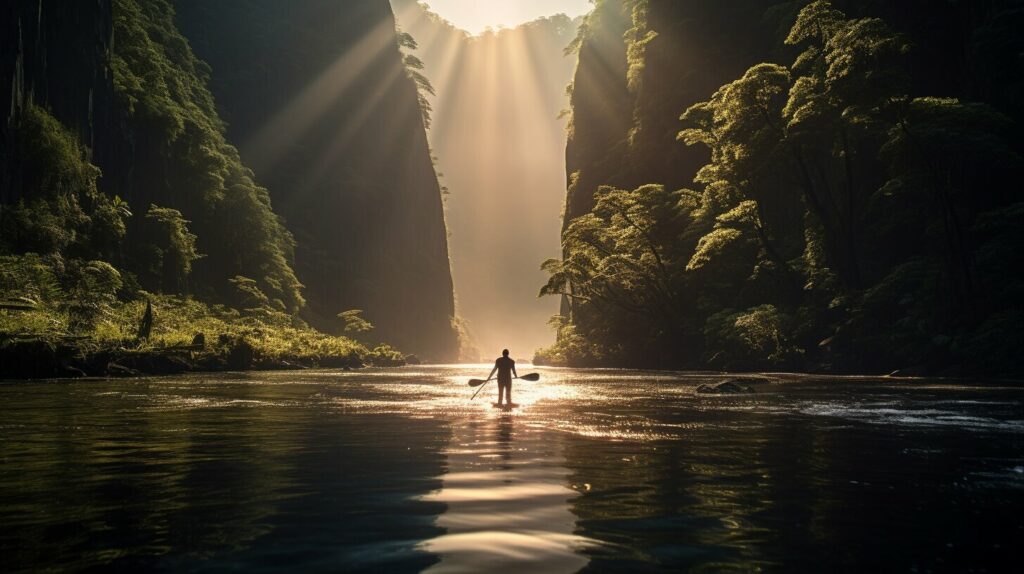
With so many great options available, river paddleboarding is an adventure you won’t want to miss. Gear up and paddle your way through some of America’s most breathtaking rivers and experience the thrill and beauty of this exciting sport.
Essential Gear for River Paddleboarding
River paddleboarding is an adventure that requires a specific set of gear. Before you step on the board, you need to ensure you have the right equipment to help you navigate the river safely. Here are some of the essential gear you need for river paddleboarding:
| Equipment | Description |
|---|---|
| Paddleboard | The board is the most crucial component of river paddleboarding gear. Choose a board that is designed for river conditions, with a length and width that provides stability and speed. |
| Personal Flotation Devices (PFDs) | A PFD is essential for any water activity, especially when navigating river currents. Select a PFD that is suitable for your body size and provides enough buoyancy to keep you afloat. |
| Proper Clothing | Wear clothes that are suitable for the weather conditions and water temperature. Dry-fit materials are ideal for paddleboarding as they wick away moisture and keep you comfortable during the ride. |
| Safety Equipment | Include a whistle, leash, and a first aid kit in your gear. Keep them attached to your PFD or the board, so they are within reach in case of an emergency. |
Choosing the right gear is crucial for a safe and comfortable paddleboarding experience. Select gear that is designed for river conditions and suits your skill level. If you are a beginner, consider renting paddleboarding gear until you feel comfortable purchasing your own.
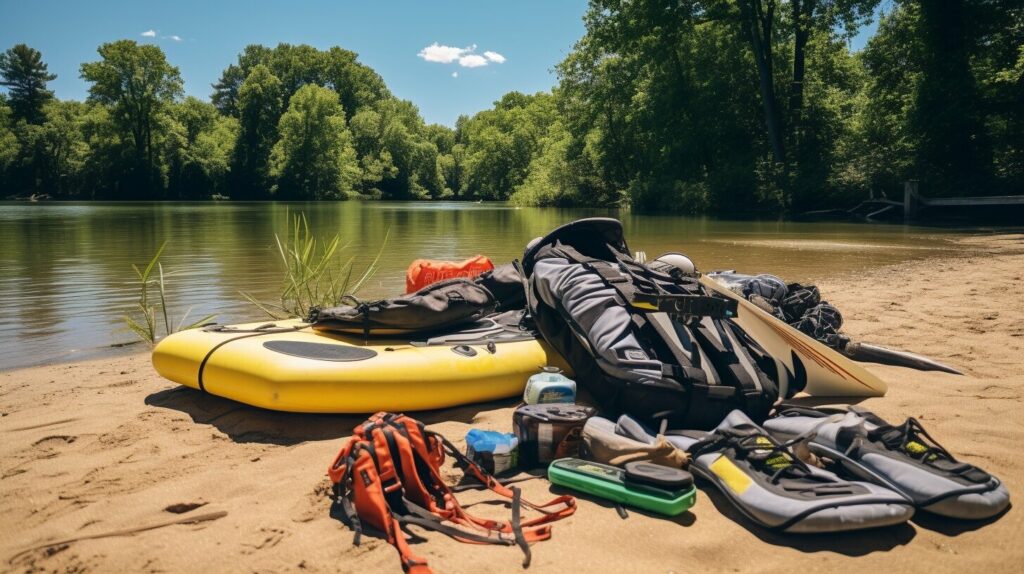
Remember, safety should be your top priority when river paddleboarding. Choose gear that fits well and is appropriate for the water conditions. With the right gear, you can enjoy the adventure of paddleboarding without any worries.
Mastering River Paddleboarding Techniques
Once you’ve gotten the hang of balancing on your board and paddling on calm waters, it’s time to take your skills to the next level. Here are some tips and techniques to help you master river paddleboarding:
- Proper Stance and Balance: Position your feet shoulder-width apart, with your toes pointed towards the nose of the board. Keep your knees slightly bent and your core engaged to maintain balance.
- Paddling Techniques: To move forward, dip your paddle into the water and pull towards the tail of the board. Alternate sides with each stroke, keeping your arms straight and twisting at the waist to maximize power. For turning, paddle harder on one side than the other.
- Handling Varying River Conditions: River currents and obstacles can pose challenges. Keep your weight centered and adjust your paddle technique to navigate choppy or fast-moving waters. If you fall off the board, use your paddle to swim to shore or climb back onto the board with caution.
Remember to take your time and practice regularly to improve your skills. Don’t be afraid to challenge yourself and try new techniques.

“Paddleboarding on a river is like dancing with nature. You and the board glide together, responding to the water’s flow and rhythm.”
A Beginner’s Guide to River Paddleboarding
If you’re new to river paddleboarding, there are a few things you need to know before you jump on a board and hit the water. Here is a comprehensive guide to get you started on your river paddleboarding journey.
Choosing the Right Board
There are different types of paddleboards available for river paddleboarding. To ensure a comfortable and stable float, choose a board that fits your weight and experience level. A wider and longer board is generally more stable, while a shorter and narrower board is more maneuverable.
It’s also important to consider the board’s fin setup. A tri-fin setup is ideal for river paddleboarding as it provides better stability and control, allowing you to maintain your course better.
Understanding Safety Precautions
River paddleboarding can be a safe and enjoyable activity, as long as you take the necessary safety precautions. Before you head out, ensure you have the appropriate safety gear, such as a personal flotation device, helmet, and leash.
It’s also crucial to learn the self-rescue technique in case of any emergency. Make sure you’re aware of the potential hazards in the river, such as strong currents, rapids, and rocks, and avoid them if possible.
Learning Basic Paddle Strokes
Mastering basic paddle strokes is essential for river paddleboarding. The forward stroke is the most basic and the one to start with. The key is to keep your paddle vertical and use your core muscles to maintain balance while you stroke.
The backward stroke is used to slow down or stop the board and is performed in the opposite direction of the forward stroke. The sweep stroke, on the other hand, is used to turn the board and is done by sweeping the paddle in an arc towards the tail of the board.
Getting Started on Calm River Sections
It’s always best to start on calm waters when you’re a beginner. This way, you can practice the basic paddle strokes and get comfortable on the board. Once you feel confident, gradually progress to more challenging river sections.
Always be aware of your surroundings and keep an eye out for other watercraft, such as kayaks and canoes.
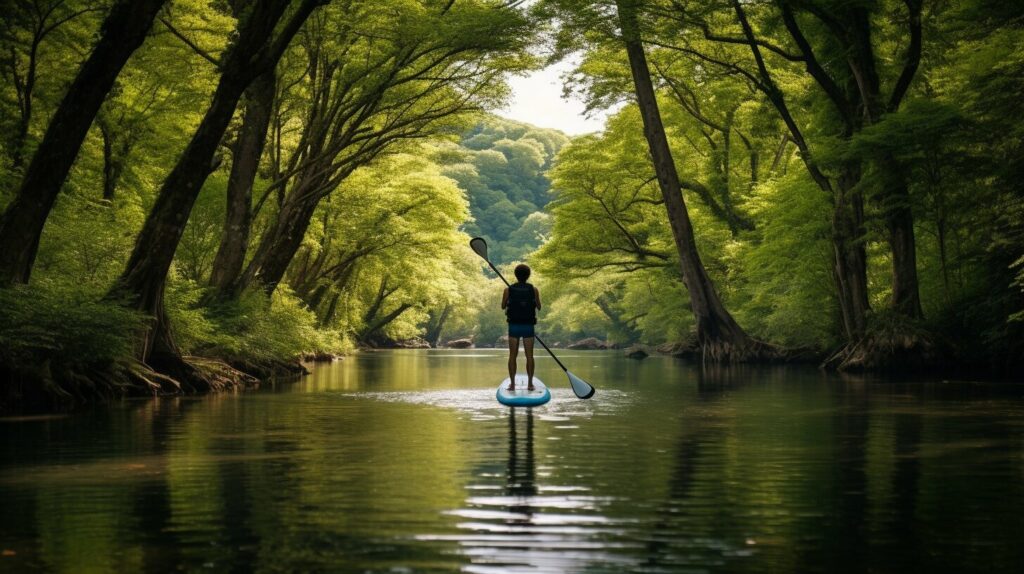
Following these tips will help you get started on your river paddleboarding journey. Remember to take it slow, follow safety precautions, and enjoy the rushing waters of your favorite river.
Safety Tips for River Paddleboarding
River paddleboarding can be an exhilarating adventure, but it’s important to prioritize safety to ensure an enjoyable experience. Here are some essential safety tips to keep in mind:
- Check weather conditions: Before heading out, make sure to check weather forecasts and avoid paddling during storms or high winds.
- Wear a leash: Always wear a leash to keep you connected to the board and prevent it from drifting away if you fall off.
- Learn self-rescue techniques: Familiarize yourself with self-rescue techniques and practice them in calm water before attempting to paddle in more challenging conditions.
- Avoid strong currents: Be cautious of strong currents which can be challenging to navigate and may cause your board to tip over.
- Stay hydrated: Bring plenty of water and stay hydrated to avoid dehydration.
By following these safety tips and prioritizing caution, you can enjoy the many benefits of river paddleboarding while minimizing risks. Remember to always respect the power of the water and take appropriate precautions to stay safe.
Benefits of River Paddleboarding
If you’re looking for a fun way to enjoy the great outdoors and get a full-body workout, then river paddleboarding is the perfect activity for you! Not only is it an enjoyable adventure, but it also comes with numerous health benefits.
Improve Overall Fitness
River paddleboarding is a great way to improve your overall fitness. It’s a full-body workout that engages your core, arms, legs, and back muscles. Whether you’re paddling upstream or downstream, the constant resistance of the water provides an excellent cardiovascular workout.
Enhance Balance and Core Strength
Paddleboarding on rivers requires balance and core strength to keep your board stable and navigate the water. As you improve your balance and core strength, you’ll become more confident and skilled on the board.
Relieve Stress
Being surrounded by nature and gliding along the water can be incredibly calming and a great way to relieve stress. The tranquility of the river and the peacefulness of nature provide a relaxing escape from the hustle and bustle of everyday life.
Connect with Nature
Paddleboarding on rivers allows you to connect with nature in a unique way. You’ll have the opportunity to observe wildlife and take in stunning views of the surrounding landscape. This provides an excellent opportunity to disconnect from technology and enjoy the beauty of the outdoors.
Foster a Sense of Adventure
River paddleboarding is an adventure that can be enjoyed by people of all ages and skill levels. It’s a great way to challenge yourself, try something new, and explore new waterways. The sense of adventure and accomplishment that comes with mastering river paddleboarding techniques is unparalleled.
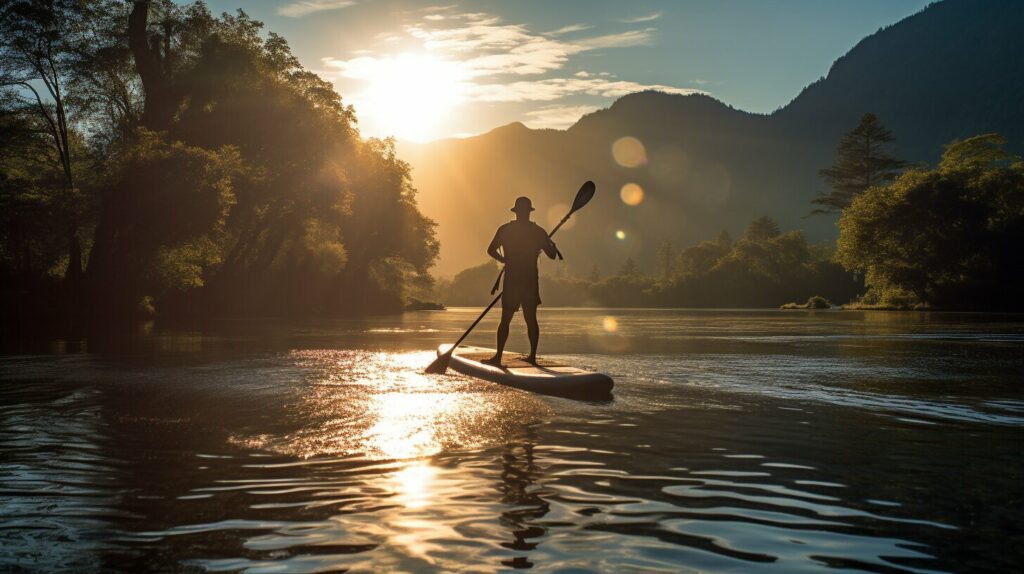
With all these incredible benefits, it’s no wonder why river paddleboarding is such a popular activity. It’s an excellent way to stay active, connect with nature, and challenge yourself. So what are you waiting for? Gear up and dive into the world of river paddleboarding today!
Gear Up and Dive into River Paddleboarding
You’ve read about the beauty, the excitement, and the benefits of river paddleboarding. Now it’s time to take the plunge and experience it for yourself. Whether you’re a seasoned paddleboarder or a beginner, river paddleboarding offers unique challenges and opportunities for adventure. Don’t let fear or hesitation hold you back – gear up and dive in!
First and foremost, make sure you have the right gear for river paddleboarding. This includes a sturdy paddleboard designed for river conditions, personal flotation devices (PFDs), and appropriate clothing and safety equipment. Familiarize yourself with your gear and make sure you are comfortable using it before hitting the river.
Next, choose your paddleboarding location wisely. Consider your skill level and the river conditions, and select a section of river that is suitable for your experience level. If you’re a beginner, start with calm, slow-moving water and work your way up to more challenging river sections as you gain confidence and skill.
When you’re on the water, stay alert and aware of your surroundings. Keep an eye out for potential hazards such as rocks, branches, or strong currents, and adjust your course accordingly. Pay attention to weather conditions and be prepared to adjust your route or cut your trip short if necessary.
Finally, remember to have fun! River paddleboarding is an invigorating and fulfilling activity that allows you to connect with nature and challenge yourself in new ways. Take the time to appreciate the beauty of your surroundings, try new techniques and skills, and enjoy the thrill of the ride.
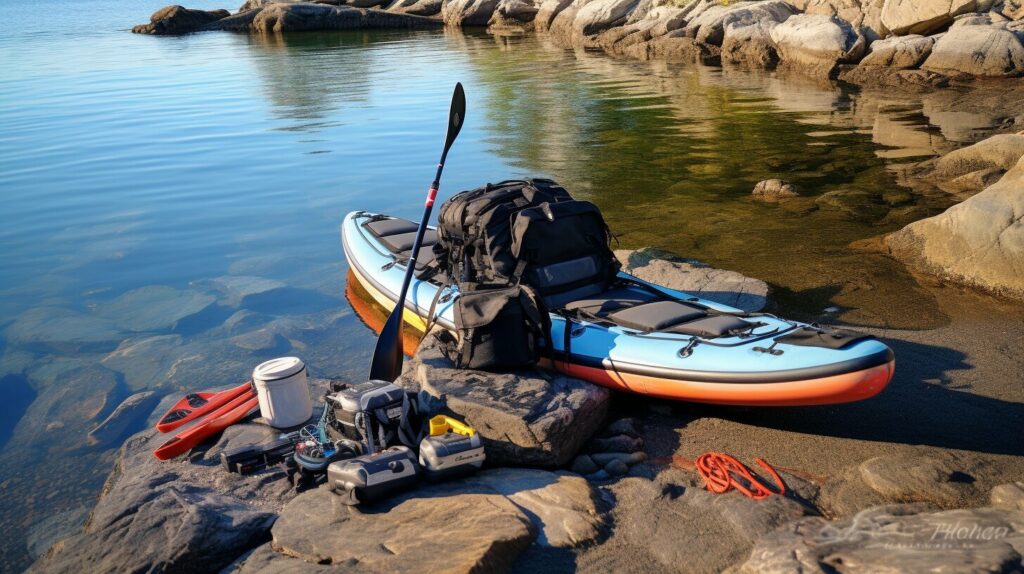
Conclusion
Now that you know the ins and outs of river paddleboarding, it’s time to get out on the water and experience the adventure for yourself. With the right gear and techniques, you’ll be able to explore unique waterways, challenge your balance skills, and enjoy the outdoor life.
Remember to prioritize safety by checking weather conditions, wearing a leash, and avoiding strong currents. And don’t forget the numerous benefits of river paddleboarding, such as improving your fitness, enhancing your balance and core strength, relieving stress, and fostering a connection with nature.
So what are you waiting for? Gear up and dive into the exciting world of river paddleboarding. The beauty and thrill of gliding along the water, observing nature, and taking in breathtaking scenery awaits you. Start your own journey today and discover the joy and fulfillment that come with paddleboarding on rivers.
FAQ
Q: What is river paddleboarding?
A: River paddleboarding is a thrilling adventure sport that involves standing on a paddleboard and using a paddle to navigate through rivers.
Q: Is river paddleboarding safe?
A: While river paddleboarding can be safe when proper precautions are taken, it is important to be aware of potential risks, such as strong currents and changing river conditions. Following safety guidelines and using the appropriate gear can help ensure a safe experience.
Q: Do I need experience to try river paddleboarding?
A: While prior experience can be beneficial, river paddleboarding is suitable for beginners as well. Starting on calm river sections and learning basic techniques can help beginners get started and build their skills.
Q: What gear is essential for river paddleboarding?
A: Essential gear for river paddleboarding includes a paddleboard, personal flotation devices (PFDs), appropriate clothing, a leash, and safety equipment. It is important to choose gear suitable for river conditions and to always wear a PFD.
Q: Can children participate in river paddleboarding?
A: Yes, children can participate in river paddleboarding under adult supervision. It is important to ensure their safety by providing them with appropriate-sized gear and choosing suitable rivers for their skill level.
Q: Where are some popular river paddleboarding spots in America?
A: Some popular river paddleboarding spots in America include the Colorado River, Snake River, and Chattahoochee River. These rivers offer beautiful scenery and opportunities for thrilling paddleboarding adventures.
Q: What are the benefits of river paddleboarding?
A: River paddleboarding offers various benefits, such as improving overall fitness, enhancing balance and core strength, relieving stress, connecting with nature, and fostering a sense of adventure.
Q: How can I improve my river paddleboarding skills?
A: To improve your river paddleboarding skills, it is helpful to practice proper stance and balance, learn different paddling techniques, understand how to turn and maneuver the board, and gain experience handling varying river conditions.
Q: Are there any safety tips I should follow while river paddleboarding?
A: Yes, some important safety tips for river paddleboarding include checking weather conditions, wearing a leash, learning self-rescue techniques, avoiding strong currents, staying hydrated, and always letting someone know about your paddleboarding plans.
Q: How does river paddleboarding differ from other types of paddleboarding?
A: River paddleboarding differs from other types of paddleboarding as it involves navigating through rivers, which can have currents and changing conditions. River paddleboarding requires additional skills and awareness compared to paddleboarding on calm waters.
